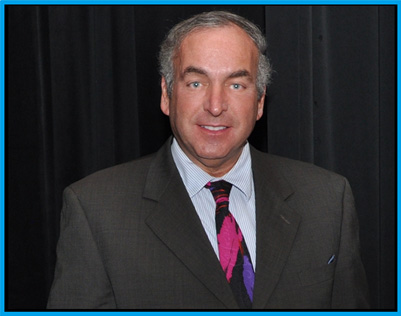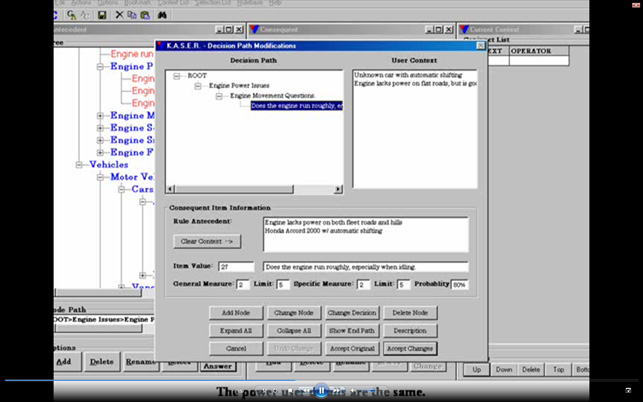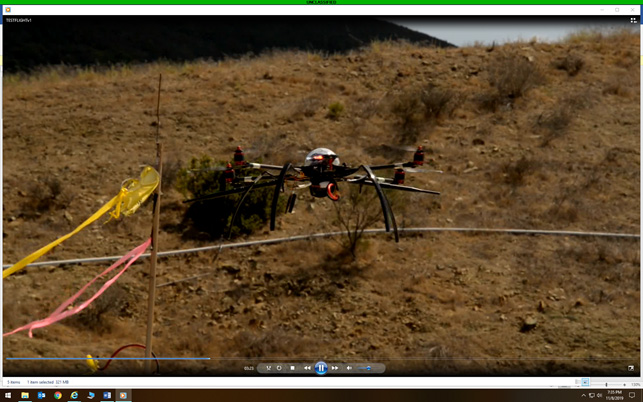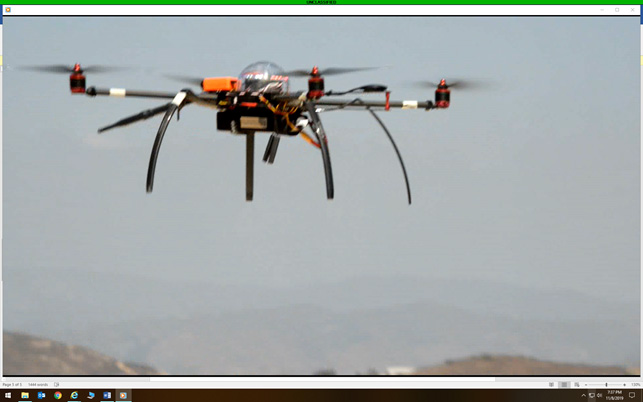Interview with Dr. Stuart Rubin, Senior Scientist at Space and Naval Information Warfare Center Pacific (NIWC Pacific), USA, co-chair of the Technical Committee of Knowledge Acquisition in Intelligent Systems of the IEEE SMC Society, Fellow of IEEE and Fellow of the American Association for the Advancement of Science.
eNewsletter: What is your current position? What are your research areas and interests?
Rubin: NIWC Pacific Senior Scientist with research in intelligent systems – including scalable machine learning. I also work on heuristic acquisition as a practical embodiment for solving NP-hard problems, which are inherently not solvable via quantum computation, computational mammography, laminar flow in UUVs and hypersonic aircraft (UAVs), intelligent tutoring, natural language processing, symbolic deep learning, automatic program synthesis, cybersecurity, and a few related areas. My research areas stem from Kolmogorov complexity, randomization, and the search for a mechanics for computability theory.
eNewsletter: How did your educational background bring you to computer science and particularly to the cybernetics field?
Rubin: Actually, back in 1977, Neil Armstrong and committee hired me to be a lecturer in engineering science. After teaching two courses of Fortran IV for engineers at the University of Cincinnati, I decided to switch my specialty to the new field of computer science and AI. My reason for getting into AI and Norbert Wiener’s cybernetics was that in deciding what to do with one’s career, one needs knowledge. It then logically follows that AI, or the study of knowledge is needed to answer the question, and I was on my way. At least, this gave me an early start on understanding Gödel’s Incompleteness Theorem.
eNewsletter: What motivates you to do research, and volunteering? How did you get started as a volunteer in IEEE and elsewhere?
Rubin: Research is motivated by the need to discover new things and improve the human condition. I am not unique in this pursuit. I know that some see research as the path to power, money, and fame. That can be fine; but if that is all there is, the career path leaves much to be desired from an individual perspective. I have always been a volunteer – from my days as an emergency paramedic to founding the KAIS TC with my co-chair, Professor Shu-Ching Chen. After all, the study of knowledge cannot be complete without the study of knowledge acquisition to ameliorate the knowledge acquisition bottleneck. Volunteering is something you do and think about in retrospect. The late great Prof. Lotfi Zadeh and his last student, Dr. Michael Smith got me into volunteering for the IEEE – from reviewing papers to organizing the TC and being an AE for several transactions. It all just happened. I think it goes hand in hand with being a people person.
eNewsletter: What are the goals of the Technical Committee on Knowledge Acquisition in Intelligent Systems (KAIS) of the SMC Society that you co-chair?
Rubin: Here are the goals – taken from our latest Technical Activity Report:
Long-term Goals (in contrast to “vision” these should be achievable within the next 5-10 years): The long-term goals follow from our vision and support our mission. Simply put, we support the U.S. military in the definition of ever-more intelligent systems – including, but not limited to, computational creativity. The KASER was the first such system. Deep learning is being advanced by our team and is resulting in “deeper learning”. Deeper learning integrates fundamental memories – unlike deep learning. This enables it to do transformational analogy. Analogy, when near valid, is an excellent device for minimizing the cost of knowledge acquisition. We are also looking to apply aspects of machine learning to cancer R&D. In particular, knowledge will be extracted from the genomic sequence for use in combatting the diseases.
Goals for current year: In 2019, we are defining patents pertaining to deeper learning. Moreover, we are developing novel methods for applying knowledge acquisition to command and control problems – including, but not limited to, diagnostics, prognostics, and education and training. The design is predicated on randomization theory, which was inspired by the KASER. Ideally, this will lead to a re-publication of randomization theory as augmented by C2 problems/solutions. We are in the process of inventing a replacement for hidden-layer neural networks, which is faster and more capable. You read right! Natural language is being explored as a medium for communicating knowledge to a machine as well as having a machine extract knowledge from natural language. We are also exploring heuristic acquisition for schema theory for data science. It is applicable for such diverse domains as cybersecurity, reducing drag on ships and aircraft and plasma confinement.
eNewsletter: In a few words, what makes the TC field so significant?
Rubin: Knowledge acquisition is an extension of our physical world. It gives meaning to life, understanding to love, and hope for the future. As I suggested above, knowledge acquisition is what enables us to find answers to “questions unknown”. Those answers define our shared future.
eNewsletter: What is the status of the TC in terms of members and past activities?
Rubin: About 90 percent of our membership is from the IEEE SMC society. We have about 40 active members, though I am quite sure that if we employed a secretary, that number could easily be ten times that. Past activities focused on traditional symbolic machine learning and neural learning – two decades before the onset of the current deep learning craze. Around the turn of the millennium, we unveiled the first knowledge amplifier, or KASER, with applications in diagnosing multiple faults in the F-16 radar systems. Past activities read like a harbinger of things to come – just as current activities predict a resurgence in symbolic and hybrid machine learning systems. The KAIS TC has integrated with the IEEE International Conference on Information Reuse and Integration and Data Science for the past 20 years. We have published over five books of advanced KAIS papers. We have held dozens of workshops over the years on topics ranging from social media to data mining to healthcare to space travel to formal methods and a plethora of related topics in between.
eNewsletter: What are the future TC objectives that you wish to meet? What are the ways you envision to meet such objectives?
Rubin: Again, taken from our latest TC report, what follows are some of the TC objectives we wish to meet. We will meet them through teamwork, taking informed risks in R&D, maintaining open lines of communication, building prototypes, and one more critical ingredient – imagination: “If you can dream it, you can do it.” GE Carousel of Progress, 1964 -65 New York World’s Fair.
Special new initiatives proposed for next year (or further in the future): In addition to the above technical topics, again we proposed augmenting the IEEE IRI Conference with topics in data science. Knowledge acquisition is after all data science – new name, same problem. This was a political move. I want to take this opportunity to emphasize that our committee is focused on technically solving this difficult problem as detailed above.
Our planned activities, for the future, center about the IRI Conference for Data Science and its associated workshops – coming up at the end of July. We plan to do a Springer special issue, which publishes extensions of our best papers in the form of book chapters. Moreover, we are planning to edit a special issue of Information Systems Frontiers dedicated to data science.
On the technical side, we plan to extend the conference by doing more software development in areas like those that Google Assistant applied to human training. Issues such as positive and negative training instances, heuristic version spaces, and other data science topics come to the forefront when building intelligent applications. Profs. Chen, Shyu, and Rubin are generalizing deep learning to work with symbolic data. This is no trivial task and we have a formal CRADA for our joint development work, which will translate into leadership direction for the IEEE IRI for Data Science conference. Success here depends on results; and, that takes time. Our philosophy is, “build it and they will come”. Cybernetics must be more than publications. We are pushing the development of intelligent software based on novel R&D. This is what the young want – especially those seeking industrial careers.
eNewsletter: How can interested scholars become members of the TC?
Rubin: Please fill out a Website Update Request at
http://www.ieeesmc.org/about-smcs/update-request
and state that you want to be added to the TC on KAIS. Please also send you name, affiliation, and email address to the following chairs and indicate that you want to be added to the TC on KAIS.
Stuart Rubin, [email protected]
Shu-Ching Chen, [email protected]
eNewsletter: Thank you for your time! We wish you success in your research, teaching, and SMCS volunteering roles!
Rubin: Thank you. As wise as we may be, we should keep in mind how much of life and progress hinges on serendipity – although it is widely held that chance favors the trained mind. Once again, nature is providing validation for the existence and progress of the KAIS TC.

Dr. Stuart H. Rubin

Early KASER Tests

Intelligent UAV Testing

Intelligent UAV Flight
Stuart H. Rubin, received a Ph.D. in Computer and Information Science from Lehigh University in 1988 and a certificate for Embodied Intelligence from MIT in 1999. He was previously an ONT Post-Doctoral Fellow, at NOSC, for three years and a tenured associate professor of computer science at Central Michigan University. He has over 38 assigned Navy patents, over 324-refereed publications – including five book chapters plus five books, and received SSC-PAC’s Publication of the Year Awards in 2007, 2009, 2010, 2011, and an honorable mention in 2019. He is a Fellow of the IEEE, the Society for Information Reuse and Integration (SIRI), the National Academy of Inventors (NAI), and the American Association for the Advancement of Science (AAAS).


